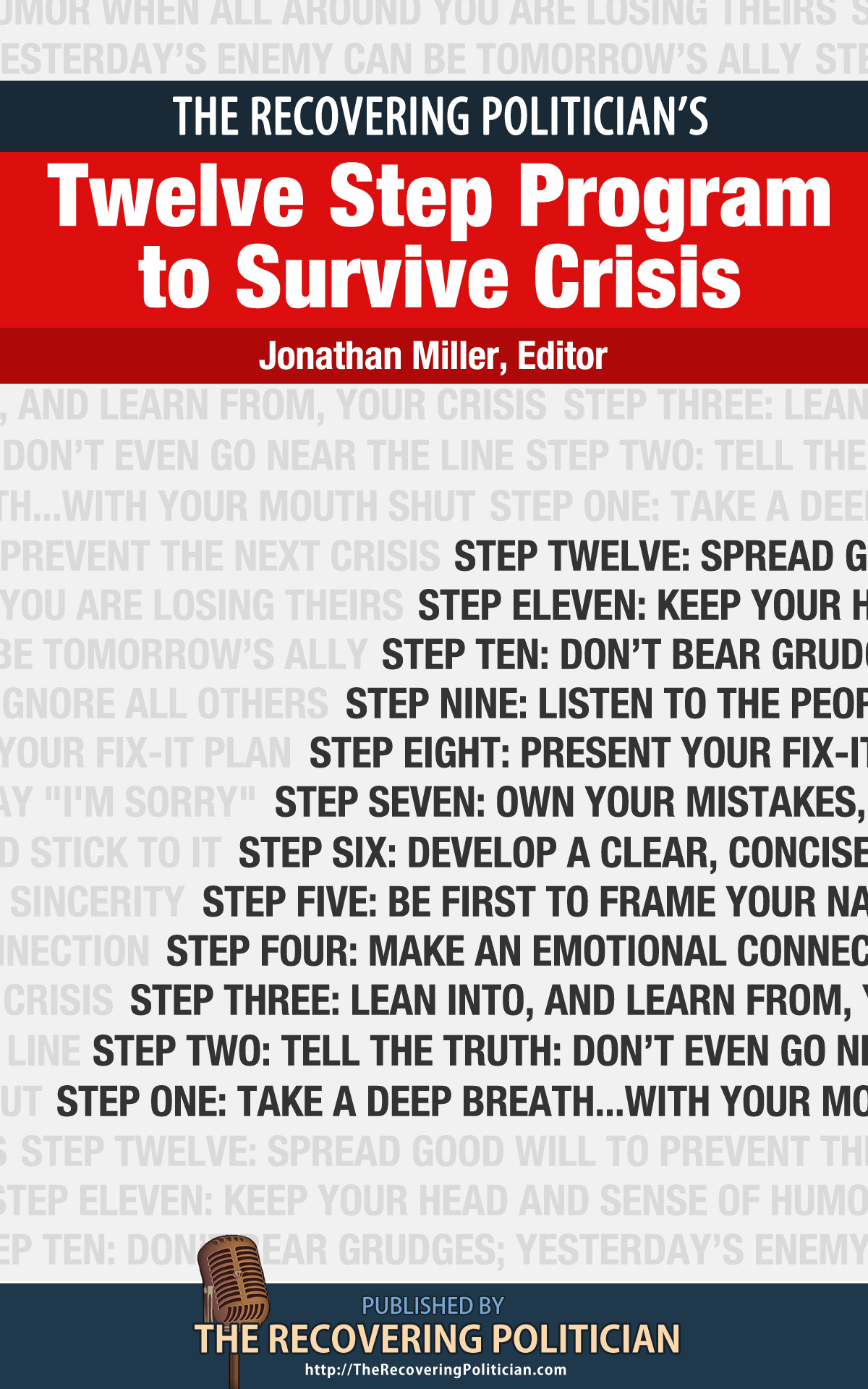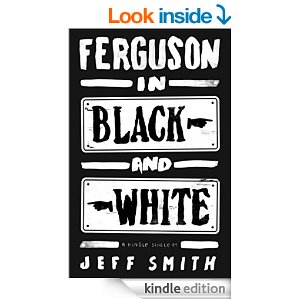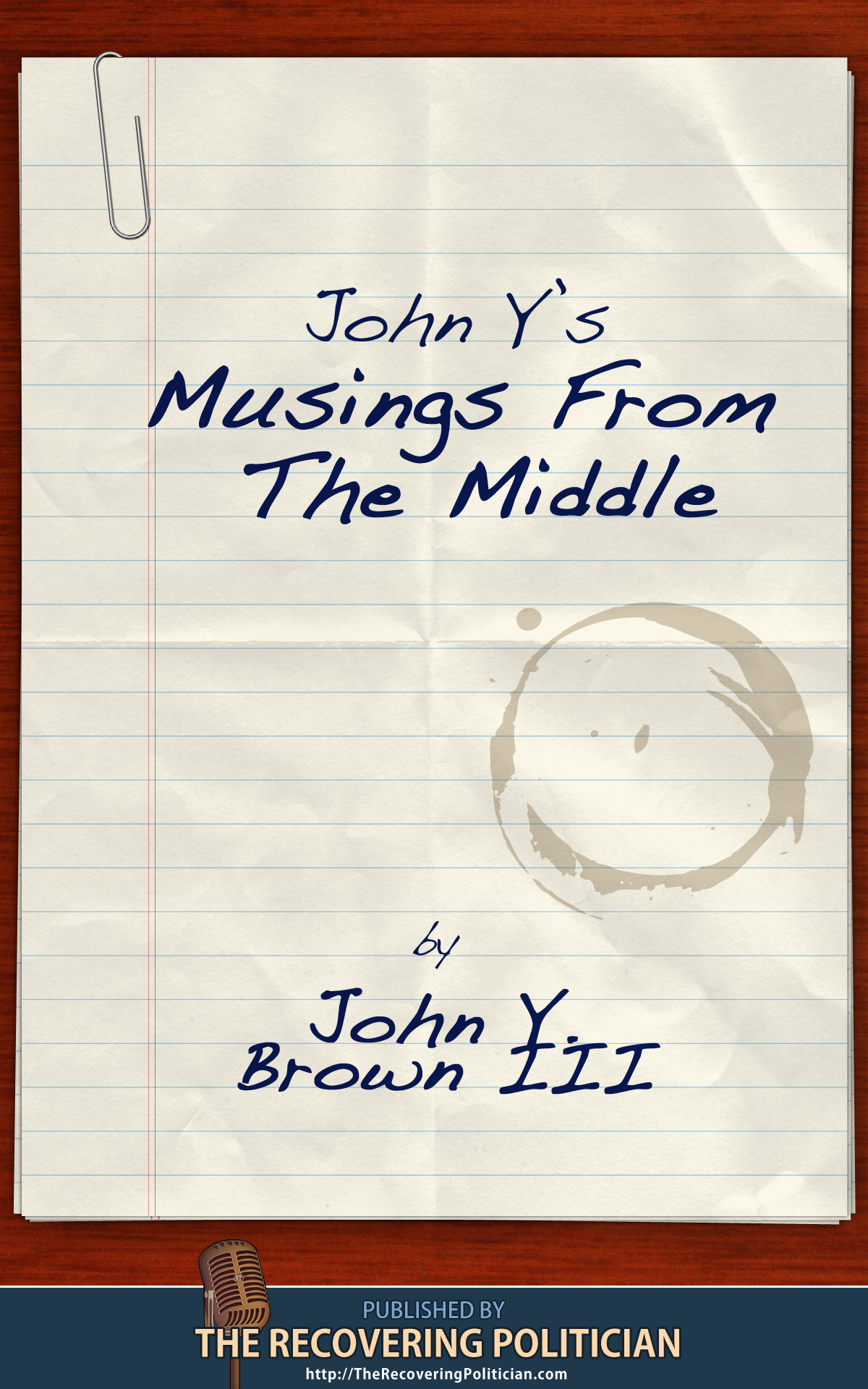By Liz Roach, on Tue Dec 17, 2013 at 1:30 PM ET “Don’t bend; don’t water it down; don’t try to make it logical; don’t edit your own soul according to the fashion.” – Franz Kafka
While Kafka wasn’t talking about baking, he may as well have been. In the midst of hectic holiday preparations and festivities, I’m here to implore you: don’t water down your favorite recipes just because they may be rich or “unhealthy.” I won’t be so dramatic as to compare it to editing one’s soul…however! Don’t edit the soul of your dish. It’s the holidays. Live a little.
To that end, let’s talk about your to-do list. Have you finished everything? What about those last-minute presents you’ve been putting off? What about that hard to shop for uncle, or the boss who has everything? What about the acquaintance that unexpectedly gave you a gift, and now you’re scrambling to find something for them?
I’ve got a (relatively) quick solution for you: make them something. It’s meaningful, easy, and can be shared with a wide audience. Scads of recipes lie in wait for you within the Internet abyss: homemade jams, pickles, sauces, and hot chocolate are all great options.
 Last year, I baked chocolate hazelnut cookies for some of my cohort from a recipe I found online. Recipients liked them so much, I decided to make them a Christmas tradition. I’ve shared a copy of the recipe below, which I promise is not as complicated as it looks. Last year, I baked chocolate hazelnut cookies for some of my cohort from a recipe I found online. Recipients liked them so much, I decided to make them a Christmas tradition. I’ve shared a copy of the recipe below, which I promise is not as complicated as it looks.
For a savory option, you can’t go wrong with bourbon beer cheese. My cousin Amanda Cole and good friend Ashley Baker get together every December to whip up a batch, and my aunt Robyn has kindly shared the recipe for your consumption.
My only rule for these recipes is this: no low calorie substitutions allowed. You’ve got a foodie soul to protect.
What are you waiting for? Get cooking!
Baci di Dama Cookies
(from http://www.davidlebovitz.com/2012/11/baci-di-dama-cookies-recipe/)
About 45 cookies
Recipe by Terresa Murphy of La Cucina di Terresa
Ingredients:
1 1/4 cups (140g) hazelnuts, toasted and skinned
1 cup (140g) rice flour (or all-purpose flour)
3 1/2 ounces (100g) unsalted butter, at room temperature
1/2 cup (100g) sugar
Pinch of salt
2 ounces (55g) bittersweet or semisweet chocolate, chopped
Directions:
Toast the hazelnuts in a 325ºF (160ºC) for 10 to 15 minutes, until they’re a deep golden brown color and the skins are peeling away. Remove from the oven and as soon as they’re cool enough to handle, rub the hazelnuts in a tea towel (or if they’re not too hot, with your hands), until as much of the loose skins come off as possible. Let them cool completely before grinding them up.
1. Put the hazelnuts in the bowl of a food processor and pulse them until very fine; they should be the consistency of coarse polenta.
2. Transfer the ground nuts to a bowl and add the rice flour (if using all-purpose flour, sift it in). Cut the butter into pieces then add the butter, sugar, and salt to the dry ingredients. Use your hands to mix all the ingredients together until the butter is dispersed and completely incorporated. The dough should be very smooth and hold together. If not, knead it until it does.
3. Divide the dough into three equal pieces and roll each piece until it’s 3/4-inch (2cm) round. Try to get them as smooth as possible, with no cracks. If the dough is too long to work with as you roll them out, you can cut the dough at the midway point and work with it in batches.
Chill the dough logs until firm on a small baking sheet or dinner plate lined with plastic wrap or parchment paper. (Terresa recommends refrigerating them for 2-3 hours, but we put them in the freezer and they were cold within 15 minutes.)
4. Preheat oven to 325ºF (160ºC) and line two baking sheets with parchment paper or silicone baking mats.
5. Working with one length of dough at a time, keeping the others in the refrigerator or freezer, cut off equal-sized pieces using a knife or pastry cutter. The ideal is 5 grams each, if working with a scale. The fastest way to do it is to cut one to the right weight, then hold that one alongside the logs and use it as a template to cut the others. Once you’ve cut a length of dough, roll the pieces into nice little balls and place them on the baking sheet, slightly spaced apart.
If you don’t have a scale, simply roll the dough to the size of a marble, trying to keep them as similar in size as possible.
6. Continue cutting the dough and rolling it into little balls. Bake the cookies for 10 to 14 minutes, rotating the baking sheets in the oven midway during cooking, until the tops are lightly golden brown. Let the cookies cool completely.
7. In a clean, dry bowl set over a pan of barely simmering water, melt the chocolate until smooth. Put a chocolate chip-sized dollop of chocolate on the bottom of one cookie and take another cookie, and sandwich the two halves together.
Once filled, set the Baci di Dama sideways on a wire cooling rack until the chocolate is firm. The cookies will keep in an airtight container at room temperature for up to one week.
(Liz’s note: To get more bang for your buck out of the dough, I skip sandwiching the cookies together.)
Bourbon Beer Cheese
(adapted from Jonathan at Gratz Park chef Jonathan Lundy’s recipe http://jagp.info/bluegrass-table-cookbook.html)
Ingredients:
14 ounces sharp cheddar cheese
4 ounces smoked cheddar cheese
8 ounces cream cheese, softened
2 tablespoon caramelized onions
12 ounces Ky Bourbon Barrel Ale
1 tablespoon of Bourbon
1 tablespoon ground black pepper
1/2 teaspoon salt
1/2 teaspoon onion powder
1/2 teaspoon garlic powder
2 tablespoons paprika
1/4 teaspoon cayenne powder
Directions:
Shred cheddar cheeses. In food processor, puree caramelized onions and shredded cheeses. Slowly add beer. Process until smooth and add remaining ingredients, continuing to process until creamy smooth consistency.
Can be stored in refrigerator for up to 2 weeks. Make ahead as flavor takes a while to develop.
By Jonathan Miller, on Thu Nov 28, 2013 at 9:15 AM ET Over the past few weeks, politicians, comedians, and the lamestream media have joined in what can only be referred to as The Shandah of the 21st Century: the trenchant desecration of the sacred holy day of Thansgivukkah.
In case you missed the Stephen Colbert satire, the Bostonian turkey-shaped menorah, or even the Presidential shout-out; millions of Americans have been exposed to the rare and historic confluence of Thanksgiving and Chanukkah with snide laughter and tweeted snarkery, treating Thanksgivukkah as just some ironic day of mock-celebration — akin to The O.C.‘s lame interfaith mashup, “Christmukkah,” or the brilliant, yet secular Frank Costanza inspiration of “Festivus.”
Indeed, while Thanksgivukkah has been only celebrated formally twice before in our nation’s history — in those extraordinarily rare cases in which a late November fourth Thursday coincided with an early winter Hebrew lunar calendar — the holiday once served as an integral thread that wove together the Jewish and American fabrics.
And yet, there is a dark, forgotten undercurrent to this Festival of Turkey Light.
I’m here to set the record straight and remind my fellow Jews and my fellow Americans of the secret, sordid history of the holiday of Thanksgivukkah:
NOVEMBER 1621
Shecky Howard
In a global conspiracy rivaled only by the fake Moon landing, the coverup of Paul McCartney’s death and the transparently fabricated long-form birth certificate of our Kenyan-born President, the anti-Semitic textbook industry has scrubbed all records of America’s first Jewish citizen, Shecky Howard.
Escaping religious persecution as a Jew in late 16th century Europe, Shecky pretended to convert to Christianity, and chose the faith with which he seemed most comfortable — the big black hats, mother-inspired guilt-trips, and victimization of Separatist Puritanism.
OK, not a great choice for a guy fleeing religious persecution…
But Shecky made the best of a bad situation. And after serving as the mohel, pediatrist and the stand-up entertainer on the Mayflower (Sample joke: “Take my wife’s apron…please!), Shecky was primarily responsible for the early peaceful entente reached among the Pilgrims and Native Americans in Plymouth, after he quietly confided to the Indian leadership that he too was a Member of the Tribe. Perhaps most poignantly, the Puri-Jew Shecky convinced both sides that turkey was the appropriate protein of choice (and carved the first bird with his circumcision tools), by arguing that pork chops would be inappropriate…because…uh…well…applesauce hadn’t been invented yet.
NOVEMBER 1863
The official American holiday of Thanksgiving was first declared in 1862 by our first Jew-ish President, Abraham Lincoln.
(OK, I said Jew-ish, not Jewish. Read the difference here and consider his black hat and beard, his über-protective wife, his passion for minority civil rights, his Kentucky birthplace (we’re all Jewish here), and most of all, HIS NAME WAS ABRAHAM, FOR MOSES’ SAKE!)
It’s no wonder, then, when the second official Thanksgiving coincided with Chanukkah, Lincoln invited Shecky Howard’s great-great-great grandson Mordechai to officiate the very first Thanksgivukkah ceremony at the White House.
And it was then that the Thanksgiving dinner as we now know it took formal shape — a family event loaded with Jewish influence — mothers insisting that their children eat every last morsel of food (THINK OF THE STARVING CHILDREN IN AFRICA!); participants guilted to travel long distances to spend agonizing hours in cramped quarters with their neurotic extended families; even the dreaded cardboard folding Kids’ Tables, a remnant of overcrowded Passover seders.
The Black Friday shopping tradition arose from the rush to purchase Chanukkah gifts before the Jewish Sabbath began that evening. And most significantly, the modern mythical ethic of Thanksgiving — the Pilgrims’ supposed quest for religious freedom — was lifted by one of Rand Paul’s ancestors directly from the story of Chanukkah’s brave Maccabees: Archeological evidence recently revealed that the Mayflower was actually a Gilligan-esque three hour boat tour gone horribly, horribly wrong.
NOVEMBER 1899
The most recent Thanksgivukkah occurred on the eve of the 20th century, when an elderly Mordechai Howard took the invitation of President William McKinley to introduce merged holiday themes at their White House celebration: turkeys stuffed with sweet potato latkes, jelly doughnuts filled with pumpkin sauce, hora dances circling piles of green bean casserole.
But alas, the ceremony went totally, awfully awry. Mordechai’s three toddler grandsons were playing a robust — some say vicious — game of Spin the Pilgrim Dreidel. After losing all of his cranberry sauce-flavored gelt, the oldest son poked the youngest in the eyes, then banged him on the head with a Star of David engraved musket, accidentally knocking over the brown gravy-fueled menorah, setting fire to the White House curtains, and ultimately killing Vice President Garret Hobart.
The Howard children
With the pogroms furiously raging in Eastern Europe, and the wave of Jewish immigrants desperately finding refuge at Ellis Island, an anti-Semitic backlash was rearing its ugly head, and the notorious Thanksgivukkah fire added (brown gravy) fuel to the hatred. A multifaceted coverup ensued; even the history books were altered to claim that Vice President Hobart died of “ill-health.” (Look it up here.) No one knows what happened to the three Howard children, although one colorized picture of them remains and is posted here.
===
So alas, we come to today, as we celebrate Thanksgivukkah for the last time apparently until the year 79,811. I urge my fellow Americans — particularly my fellow Jews — to refrain from the easy jokes, and instead honor the great Howard family…Shecky, Mordechai, even the three clownish grandsons..and remember what this holiday is truly about: religious freedom, family togetherness, delicious food, and most soi-tenly, the miracle of laughter.
===
If you like this piece, please read How Adam Sandler’s Chanukkah Song Saved the Jews and The Five Most Jew-ish Gentiles in Pop Culture.
By Josh Bowen, on Thu Nov 28, 2013 at 8:30 AM ET
Holidays present a nutritional nightmare for everyone, including yours truly. Cakes, egg nog, cookies, alcohol, etc. are served at every dinner party, work gathering and family get-together. You can’t ignore it, it’s the holidays and regardless of religious beliefs high sugar foods will be there. So to combat your holiday cravings, I compiled a list of strategies to help you throughout this holiday season. Here are my top 12 strategies to surviving the holidays and keeping your body in tact.
1. Know what types of foods will be where you are going and what you are going to choose to eat.
2. Don’t go to the table saying “you are going to eat healthy,” Don’t draw attention to it. The host will be mad if you are not sampling the food.
Fill the plate with veggies, fruits and lower fat fare. Start eating these foods first so you are not so hungry. Satiety.
3. Don’t say yes to every basket or cookie someone puts in front of you. Say no to Egg Nog!
 4. Do not nibble throughout the day. All those bites add up. 4. Do not nibble throughout the day. All those bites add up.
5. If you are not cooking offer to bring a healthy alternative with you. Eat something healthy to fill you up sooner.
6. Have a healthy snack before the meal, that way you are not as hungry when you eat for real
7. Control stress. Stress makes everything worse.
8. Focus on weight maintenance vs. weight loss during the holidays. If you are currently overweight and want to lose weight, this is not the time to do it. Maintenance of your present weight is a big enough challenge during the holiday season. Don’t set yourself up for failure by making unrealistic goals for yourself.
9. Plan on NOT dieting after the New Year. Anticipation of food restriction sets you up for binge-type eating over the holidays (“after all, if I’m never going let myself eat this again after Jan. 1st, I might as well eat as much as possible now!”) Besides, restrictive diets don’t work in the long run. They increase your loss of lean body mass vs. fat, slow down your metabolism, increase anxiety, depression, food preoccupation, and binge eating, and make weight re-gain more likely.
10. Be physically active every day. Often, students’ busy holiday schedules (or lack of structured schedules) bump them off their exercise routines. Physical activity, especially aerobic activities (like brisk walking, jogging, bicycling, roller blading, and swimming) can help relieve stress, regulate appetite, and burn up extra calories from holiday eating.
11. Choose your beverages wisely. Alcohol is high in calories. Liquors, sweet wines and sweet mixed drinks contain 150-450 calories per glass. By contrast, water and diet sodas are calorie-free. If you choose to drink, select light wines and beers, and use non-alcoholic mixers such as water and diet soda. Limit your intake to 1 or 2 alcoholic drinks per occasion. And, watch out for calories in soda, fruit punch, and egg nog as well.
12. Enjoy good friends and family. Although food can be a big part of the season, it doesn’t have to be the focus. Holidays are a time to reunite with good friends and family, to share laughter and cheer, to celebrate and to give thanks. Focus more on these other holiday pleasures, in addition to the tastes of holiday foods. The important thing to remember is balance and moderation. It’s OK to eat too much once in a while. Just relax, enjoy the holidays, and remember what the season is all about.
Maintain perspective: Overeating one day won’t make or break your eating plan. And it certainly won’t make you gain weight! It takes days and days of overeating to gain weight. If you over-indulge at a holiday meal, put it behind you. Return to your usual eating plan the next day without guilt or despair.
By Liz Roach, on Tue Nov 26, 2013 at 10:00 AM ET “It seemed I was a mite of sediment / That waited for the bottle to ferment / So I could catch a bubble in ascent.”
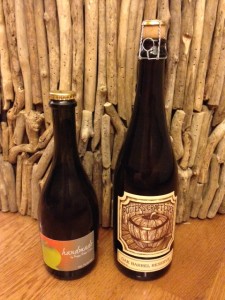 As Thanksgiving trots its way closer, many of us identify with the cheerful sentiment that Robert Frost describes in his poem, “In a Glass of Cider.” As Thanksgiving trots its way closer, many of us identify with the cheerful sentiment that Robert Frost describes in his poem, “In a Glass of Cider.”
Especially if you are lucky enough to be sipping one of the many high-quality hard ciders that are available now. From Virginia to New York to Washington state, producers across the U.S. offer many exceptional varieties.
This time of year, food columnists and wine experts argue like family over which of this or that wine may pair best with the myriad (and sometimes mystifying) dishes of Thanksgiving. Zinfandel? Pinot Noir? Dry Riesling? This year, I’m recommending a hard cider. It’s crisp, it’s refreshing, and it’s a traditional American beverage. The Pilgrims are said to have drank it, and it may pair surprisingly well with your Aunt Lulu’s green bean casserole and Cousin Alvin’s cornbread stuffing. As a bonus for your allergy-challenged relatives, it is gluten-free.
Thanksgiving pairings are all about accenting the feast of plenty while not distracting from it. Today’s ciders use an assortment of apples, including Pippins and Kingston Black, among many others. Most cider producers make several renditions, from dry to sweet. For meal pairing purposes, a drier version would work best. But if you’re looking for an aperitif or dessert drink to pair with the pumpkin bread pudding and pecan pie, go for a sweet or sparkling apple cider. You may just create a new ritual.
 While you indulge, be sure to toast and treasure those nearest and dearest to you, whether friends, relatives, or tablemates for a day. As Frost concluded his poem, “The thing was to get now and then elated.” There’s no better time to celebrate than while surrounded by loved ones and before a heaving table of fixings and fine draughts. While you indulge, be sure to toast and treasure those nearest and dearest to you, whether friends, relatives, or tablemates for a day. As Frost concluded his poem, “The thing was to get now and then elated.” There’s no better time to celebrate than while surrounded by loved ones and before a heaving table of fixings and fine draughts.
Although excellent cider options abound, here are a few suggestions
Potter’s Craft Cider (Charlottesville, VA) This young label produces two lively types of cider: the Farmhouse Dry and the Oak Barrel Reserve, which is aged in apple brandy oak casks.
Foggy Ridge Cider (Dugspur, Virginia) Try renowned cidermaker Diane Flynt’s First Fruit and Serious Cider to go with the main course, or the harder-to-find Foggy Ridge Handmade for dessert.
Original Sin Hard Cider (New York) In addition to the traditional apple hard cider, there are flavors such as Pear, Elderberry, and Heirloom Cherry Tree, which is made from heirloom apples and tart cherries.
Alpenfire Cider (Port Townsend, WA) Of the many wonderful choices from this organic producer, you may want to sample Smoke, which is triple fermented in whiskey and mead barrels, and benefits victims of the 2013 wildfires.
By Erica and Matt Chua, on Tue Nov 26, 2013 at 8:30 AM ET Wine regions rarely disappoint. The combination of the visual, well-tended vines climbing towards the sky, and the experiential, flavors of the wine and food, will excite the most dull among us. Almost universally wine regions are worth the trip, but being situated literally halfway around the world from most people, Argentina’s Mendoza region needed to offer something more than tours and tasting rooms. Mendoza has succeeded in creating a food and wine experience worth the trip.
Mendoza is one the world’s most improbable and unique wine regions. Naturally it is a barren, as precipitation is kept on the Chilean side by the highest part of the Andes range. It should be a productive agriculture region as little as it should be a wine destination. Therein lies why it is successful though, generations had to work to make it happen, never taking for granted natural gifts. The culture of hard work that led to the irrigation and cultivation of the land has since been put into creating an international tourist destination.

Fulfilling it’s duty as Argentina’s largest wine producer by volume, Trapiche offers the gold standard of large-winery tours similar to Mondavi in California. Informative and thorough, the tours walk visitors through the entire process, albeit closer to the process than you can get in many other places.
Read the rest of…
Erica & Matt Chua: Why Wine Taste in Mendoza
By Liz Roach, on Thu Nov 14, 2013 at 10:00 AM ET  A few weekends ago, I ate hearts. Literally. And I have to admit, they tasted pretty good. A few weekends ago, I ate hearts. Literally. And I have to admit, they tasted pretty good.
Organs aren’t usually among my choice indulgences. But this particular treat, chicken hearts, was surprisingly tasty, and ended up being one of my favorites among a smorgasbord of delights on a recent evening.
The restaurant was Husk of Nashville, James Beard Award-winning Chef Sean Brock’s new outpost. (The original Husk is in Charleston, South Carolina, also an excellent eatery.)
Biting into the tender yet firm delicacy, I tasted smoky, peppery flavors. The menu imparts a sense of romance about the dish, as it describes the hearts being “roasted in the embers with West African Mustard Onions.” You can almost imagine them being brushed with fairy dust as the kitchen handles them as gently as you would cradle a robin’s egg.
For those who haven’t seen the reams of articles gushing over Brock (including Husk being named Bon Appetit’s Best New American Restaurant of 2011 , he is known for exclusively using ingredients that originate in the American South at both locations. This includes kitchen workhorses like salt and olive oil.
Combine that with an inventive, clever play on traditional Southern dishes in a well-appointed but unpretentious setting, and you’re set for a nice meal.
My visit was meant to be a brief stop-off en route from Mississippi to Kentucky. (It sure beat fast food.) But it quickly turned into a leisurely-paced feast. Why hurry?
Among the delicacies that appeared on my table were the following: 6-week aged beef tartare with a smoked oyster sauce, egg yolk, and pickled chilis. Smoky chicken wings with pepper mash dry rub and Alabama white sauce. Soft shell crab with speckled butter bean and pepper salad. An old-fashioned vegetable plate with benne fried green tomatoes, grits swimming with a poached egg & peppers, Brussels sprouts, and succotash. And those are just a few of the dishes I sampled.
All this paired with an Ole Sorgy, a libation containing W.L. Weller bourbon, tobacco bitters, sorghum syrup, Bourbon Barrel cherry bitters, and lemon, along with pleasant dinner conversation. After a slice of lemon buttermilk pie and plenty of refreshing coffee, all that was left was the challenge of keeping my eyes open on the drive home.
Since the typical home cook may be a little hesitant about experimenting with chicken hearts, I finagled a recipe for the buttermilk pie from talented Husk pastry chef Lisa Donovan.
If you want to taste these soul-warming provisions at the source, take a visit to the cordial folks at Husk in either city. They’ll take such good care of you, you just might want to take them home to meet your mama.
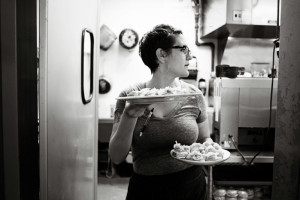 Lisa Donovan’s Buttermilk Pie Lisa Donovan’s Buttermilk Pie
Ingredients:
6 eggs, room temperature
3 cups sugar
½ cup all purpose flour
1 teaspoon salt
4 ounces butter, melted
1 ½ cups buttermilk
Zest from one lemon
1 tablespoon lemon juice
Directions:
Whisk sugar, flour and salt together. In a separate bowl, whisk eggs and add in the dry mixture. Incorporate well. Add melted butter, zest, juice and then stream in buttermilk. Pour into a 10″ unbaked pie shell and bake for 30 minutes at 350 degrees, then reduce heat to 325 degrees for an additional 35 minutes.
By RP Nation, on Mon Nov 11, 2013 at 10:00 AM ET
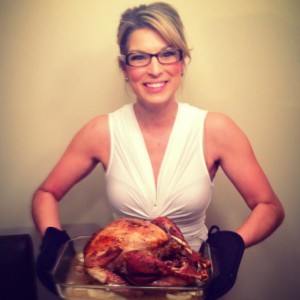 10-28: There comes a time when you realize you have a sickness. Most girls spend $20 on a new shirt. I bought a turkey. 10-28: There comes a time when you realize you have a sickness. Most girls spend $20 on a new shirt. I bought a turkey.
Yes, a month before Thanksgiving every year, I get so excited that I can’t wait…and I buy a turkey. And I stuff it, and smother it, and baste it, and love on it, and eat the crap out of it until I pass out from Turkey Coma.
Yes, I could get a new shirt, but I bought a bird. Sickness? Nah. Priorities…
 10-29: I may or may not have tried on some of those old pageant dresses last night and finished carving the turkey in one…I figured I should dress for the occasion when I’m cracking and boiling bones. I used my ex for added inspiration when it came to hacking at it with the cleaver – great stress relief. Don’t get this confused – I do not wish to hack him up – but boy is it fun taking undistributed hostility out on turkey bones, while wearing a full-length gown, with opera music playing in the background. If you find yourself doubting the credibility here, I promise you: I can’t make this stuff up on my best day. This is full-on, unadulterated truth as I live and breathe it. Seriously though, this exercise to preserve mental fortitude comes highly recommended. I went to bed accomplished, slept like a baby, and woke up wanting to seize the day instead of attacking it. Thank you, turkey bird. 10-29: I may or may not have tried on some of those old pageant dresses last night and finished carving the turkey in one…I figured I should dress for the occasion when I’m cracking and boiling bones. I used my ex for added inspiration when it came to hacking at it with the cleaver – great stress relief. Don’t get this confused – I do not wish to hack him up – but boy is it fun taking undistributed hostility out on turkey bones, while wearing a full-length gown, with opera music playing in the background. If you find yourself doubting the credibility here, I promise you: I can’t make this stuff up on my best day. This is full-on, unadulterated truth as I live and breathe it. Seriously though, this exercise to preserve mental fortitude comes highly recommended. I went to bed accomplished, slept like a baby, and woke up wanting to seize the day instead of attacking it. Thank you, turkey bird.
10-30: It has been brought to my attention that the creativity with which I crafted my previous post makes me look like a mixture of Carrie and Kathy Bates in Misery. Apparently, my pseudo-psychopathic depiction got so much traction, it was shared multiple times, by multiple people outside our company. Might I remind you, Kathy Bates won an Oscar for Best Actress, Sissy Spacek garnered the nomination, respectively, for portraying those maniacs.
My self-indulgent FB Acceptance Speech: Thank you to all the adorably-dense gossip addicts. I’m so humbled you have the time and energy to worry with little ‘ole me. If you ever desire to walk a mile in each other’s shoes, I warmly welcome you to enjoy the perspective that it’s okay to be yourself – and really fun to freak people out while doing so. De-stressing by roasting a turkey, being resourceful by chopping up it’s bones for stock, all while dressed in a gorgeous gown you still fit into a decade later is sheer bliss. I’ll wear your shoes and walk around all pent up and miserable, whispering passive-aggressive quips as some kind of elitist overcompensation mechanism. I’ll purse my lips and scowl with that trademark pinched look on my face. I’ll trade so you can experience true and simple joy, never to fear your reflection in the mirror, so you can feel the freedom of being you, loving you – crazy and all, and of course dancing barefoot – because I don’t even like shoes. So c’mon. Walk in mine, put your feet up and relax those pinched butt cheeks of yours. Otherwise, grab some popcorn and enjoy the show. (Exiting Stage Left before the pig blood gets dumped on my head)
By Saul Kaplan, on Mon Nov 11, 2013 at 8:30 AM ET You probably haven’t heard of Richard LaMotta but I bet you have heard of and enjoyed his innovation, the Chipwich ice cream sandwich. I rank the Chipwich right up there on my list of all-time favorite innovations along with Guttenberg’s printing press and Apple’s iPhone. Like most great innovations the Chipwich didn’t require inventing anything new, just recombining existing elements in a new way to deliver value. What could deliver more value than sandwiching soft vanilla ice cream between two, large chocolate chip cookies? As if that isn’t innovative enough add in the piece de resistance, rolling the whole thing in chocolate chips! Now that’s innovation. LaMotta died last week and his classic entrepreneur story is worth remembering and celebrating.
LaMotta was ahead of his time in 1982 when he deployed unheard of guerilla marketing tactics to take the idea for Chipwich from a retail confectionary store called The Sweet Tooth in Englewood, New Jersey to selling 200,000 per day across the country at its peak. The name Chipwich came from an early crowd sourcing effort when LaMotta held a contest offering a year’s supply of the product to the winning contributor. A student from New Jersey came up with the winning name and was rewarded not only with a year’s supply of the tasty treat but also put through college by the company for her contribution.
 LaMotta had a vision to take the Chipwich national but was told by marketing “experts” that it would take $50M in working capital that the company didn’t have. No worries, LaMotta took the campaign to the streets of Manhattan, literally, deploying street cart vendors complete with identifiable pith helmets and khaki pants. They created an innovative sales channel without the help of the experts establishing a new product category for premium handheld ice cream and an attractive new price point breaking the $1 barrier. Prior to Chipwich hand held ice cream products were low quality and low cost. Vendors consistently sold out of Chipwiches and the price point continued to move up. Fortune 100 food giants approached LaMotta to use the carts as a trial medium for their own products. LaMotta had a vision to take the Chipwich national but was told by marketing “experts” that it would take $50M in working capital that the company didn’t have. No worries, LaMotta took the campaign to the streets of Manhattan, literally, deploying street cart vendors complete with identifiable pith helmets and khaki pants. They created an innovative sales channel without the help of the experts establishing a new product category for premium handheld ice cream and an attractive new price point breaking the $1 barrier. Prior to Chipwich hand held ice cream products were low quality and low cost. Vendors consistently sold out of Chipwiches and the price point continued to move up. Fortune 100 food giants approached LaMotta to use the carts as a trial medium for their own products.
Chipwich went viral without the help of today’s social media platforms. Imagine the tweets. Chipwich received an estimated $50 million of earned advertising exposure receiving thousands of free endorsements. Mayor Koch even posed for a publicity photo, for no fee, as he took a big bite of a Chipwich. It was an attractive David vs Goliath story that the press ate up. LaMotta says he gained 30 pounds just doing free media interviews.
LaMotta learned the many hard lessons of entrepreneurship along the way, twice filing for and then emerging from bankruptcy, as the knockoffs came fast and furious. He also learned first hand what happens when an entrepreneur mixes it up with the world of large corporations. LaMotta laments what he called large corporate “analysis to paralysis” syndrome and cautioned aspiring entrepreneurs about the importance of non-disclosure agreements. In 2002 with a nationally recognized brand, more than a billion Chipwiches sold, and 3700 vendors in 36 markets, he sold the company to Coolbrands International, a Canadian distributor, who also owned the Eskimo Pies brand. Coolbrands then in turn sold both brands to Dreyer’s, a subsidiary of Nestle, who discontinued making the Chipwich because they already had another brand in the category. Like most entrepreneurs LaMotta struggled with losing control of his baby.
LaMatta was a classic entrepreneur who never quit. He said it best, “I got out there, I went for it, and persevered through the rough times.” He did indeed. Chipwich is a great innovation story. Rest in delicious peace, Richard LaMatta.
By Lauren Mayer, on Wed Nov 6, 2013 at 8:30 AM ET Every generation seems to experience a couple of epic historic moments that define them – we have ‘The Greatest Generation’ with their memories of World War Two, former ‘flower children’ who remember The Summer of Love (or at least did some indiscriminate making-out that year), and so on. I’m on the younger side of Baby Boomers – I was 10 in 1969, so the only real hippie experience I had was embroidering flowers on my bellbottom jeans and writing earnest but dreadful poetry with lines like “the earth was meant for love, not pollution.”
Usually these landmark moments are pretty serious, even tragic, like assassinations or weather-related disasters. And occasionally, they can be celebrations of the human spirit, like the first moonwalk, the falling of the Berlin Wall, or the record number of babies born 9 months after major power outages. But only rarely do we find a transformational, epic moment that has nothing sad about it, nothing triumphant, but just pure fun – in fact, up until recently, the only examples I could think of were pop culture silliness, like pet rocks, the Macarena, or Gangnam Style.
However, due to a calendar quirk, this month will be the first time since 1888 that Chanukah and Thanksgiving have overlapped. And it won’t happen again for over 77,000 years. (Which is how long I know many people hope it will be until the Macarena comes back.) So naturally, people are jumping on it as an opportunity to celebrate, to develop fun hybrid recipies (sweet potato latkes with melted marshmallows . . . don’t think about it too much), and of course to find the marketing angle. Someone has already trademarked “Thanksgivukkah,” and you can buy Thanksgivukkah-themed cards, t-shirts, and even a ‘menurkey’ (a menorah in the shape of a turkey).
Even though this would seem to be a completely apolitical moment of joy, in today’s bitter partisan climate I must admit I was expecting some pushback from the far right who keep insisting that our founding fathers meant for this to be a Christian nation, so I thought they’d be horrified that a holiday celebrating American history would be combined with a non-Christian observance. But so far the only objection has come from comedian Stephen Colbert (who complained that the war on Christmas is now going after Thanksgiving). So we can celebrate without reservation!
By Erica and Matt Chua, on Tue Oct 29, 2013 at 8:30 AM ET Wine regions rarely disappoint. The combination of the visual, well-tended vines climbing towards the sky, and the experiential, flavors of the wine and food, will excite the most dull among us. Almost universally wine regions are worth the trip, but being situated literally halfway around the world from most people, Argentina’s Mendoza region needed to offer something more than tours and tasting rooms. Mendoza has succeeded in creating a food and wine experience worth the trip.
Mendoza is one the world’s most improbable and unique wine regions. Naturally it is a barren, as precipitation is kept on the Chilean side by the highest part of the Andes range. It should be a productive agriculture region as little as it should be a wine destination. Therein lies why it is successful though, generations had to work to make it happen, never taking for granted natural gifts. The culture of hard work that led to the irrigation and cultivation of the land has since been put into creating an international tourist destination.

Fulfilling it’s duty as Argentina’s largest wine producer by volume, Trapiche offers the gold standard of large-winery tours similar to Mondavi in California. Informative and thorough, the tours walk visitors through the entire process, albeit closer to the process than you can get in many other places.

What makes Mendoza special? It is the overall experience of European indulgence meets Latin America. It has incomparable views of wineries nestled against the tallest mountain outside of the Himalayas. It offers the expected wine tasting, but also locally produces the unexpected: world-class gelato, chocolate, honey, olive oil, and much more. It blends a historic town center with thousands of acres of parks and modern amenities. It even has adventure sports including climbing of one of the Seven Summits. In short, it has everything.
Read the rest of…
Erica & Matt Chua: Why Wine Taste in Mendoza
|
The Recovering Politician Bookstore
|
 Last year, I baked chocolate hazelnut cookies for some of my cohort from a recipe I found online. Recipients liked them so much, I decided to make them a Christmas tradition. I’ve shared a copy of the recipe below, which I promise is not as complicated as it looks.
Last year, I baked chocolate hazelnut cookies for some of my cohort from a recipe I found online. Recipients liked them so much, I decided to make them a Christmas tradition. I’ve shared a copy of the recipe below, which I promise is not as complicated as it looks.












